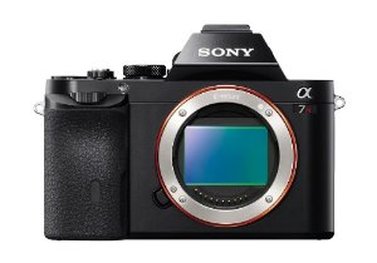
I have read a lot of articles that explained why the micro four thirds, cell phone cameras, and now the new Sony cameras will be the end of the DSLR. I personally don't think we are anywhere near that happening for a few reasons. I have explained why full frame cameras give more flexibility and options over micro four thirds cameras, so I don't think they will have much impact on the DSLR market and the statistics seem to back that idea up. The cell phone cameras also have a long way to go to match the quality and flexibility of the FF (full frame) DSLR.
These new Sony cameras are the closest thing to replacing the DSLR that I have seen. Because they are mirrorless, they are smaller than your typical FF mirrored camera. This would make them better for some uses, but worse for others. Unfortunately, every full frame large aperture telephoto lens is large and a larger camera makes them easier to balance when you hand hold them. I have put large Canon lenses on my Olympus EPL5 and it nearly impossible to shoot without a tripod. Also, there are very few lenses made specifically for the Sony right now, so if you want to shoot birds (for example), you will need to use an adapter with another brand of lens. There is a trade off for using an adapter. While there have not been many side by side reviews for quality, the ($400) adapters have shown to slow down autofocus. I should mention that I love the fact that they have autofocus with the adapters, since the micro four thirds cameras don't, but that doesn't make them much better as a full time replacement for the DSLR.
While I do believe some Canon owners that shoot landscapes will be happy to buy the Sony a7r to take advantage of its 36.3 megapixels while continuing to use their Canon lenses, I don't think that the people that want to shoot birds, kids, dogs, sports, etc... would be very happy with this camera as their only camera for that purpose.
Sony's A7 (24.3 megapixel) camera is reported to have faster autofocus, but I have not heard how it works with the adapters. The main downside is that you don't get much benefit, other than size, when compared to a DSLR. I personally don't think camera size is that important if you will be using large lenses (especially when you have to use a clunky adapter). The main benefit to micro four thirds is that all of their lenses are smaller than their full frame counterparts. When I am carrying around a bag of lenses and a FF camera attached to a lens, the thing that feels heavy is the bag, not the camera.
I am not saying these cameras aren't a major break through. I just think we are years from them being a total replacement for full frame DSLRs, assuming it ever happens. However, I do see how these could be a great supplement to a DSLR. As I mentioned, the a7R would be great for those shooting landscapes with adapted lenses, especially for people currently shooting Canon since they don't make a camera with 36 megapixels. Also, because it works with many other lenses, it can be very useful for those with a collection of lenses.
I am not planning on buying this camera right now, but if I do, it would be used to replace my micro four thirds setup, not my full frame DSLR. I mainly wanted micro four thirds for the ability to have a jacket-pocketable setup and I still think it currently fits that need better because of the many small lenses. However, the Sony could fill it to some extent with the 40mm pancake lens (with adapter), the Sony kit lens, and a some of the Canon primes (like the 85mm, 50mm, and 35mm). It definitely wouldn't be as flexible as m43, but I am not sure I really need the full flexibility of the m43 setup. I am still thinking it over, so that alone, tells you the importance of these new cameras, especially the a7R.
For me, the $2500+ cost (adapter + camera) is the main sticking point (and the native lenses aren't cheap either). Also, the shutter is supposed to be extremely loud. I can get a lightweight, more versatile micro four thirds setup with several lenses for less money. The upside to the Sony is better picture quality and more versatility out of my current Canon lenses. I guess I could just add the Sony and keep the m43, but that gets harder to rationalize. I already have a hard time deciding which camera to take on any given day. Having two small cameras to choose from seems like overkill for my uses.
 RSS Feed
RSS Feed